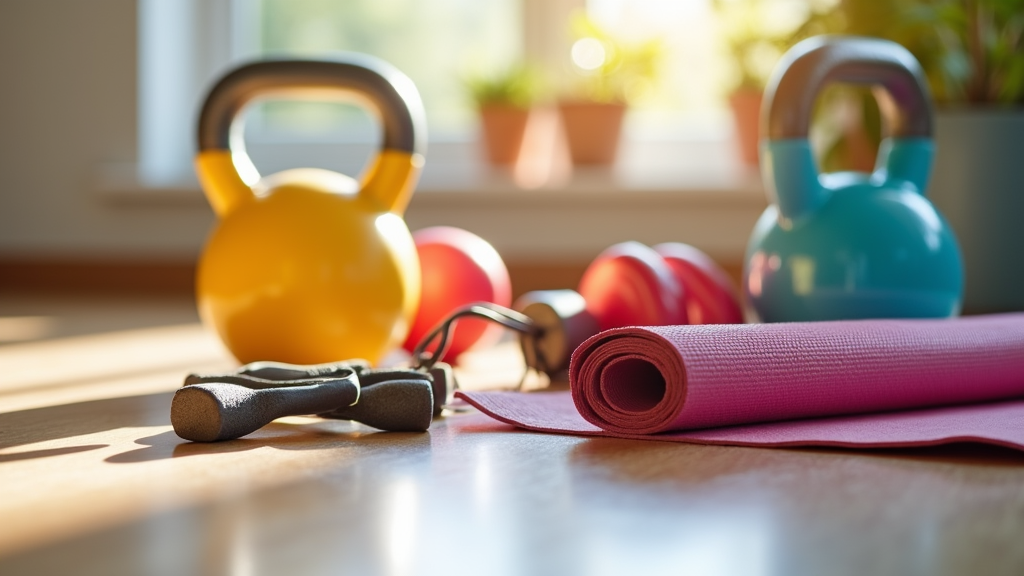If you’re aiming to lose weight, picking the right exercise can feel overwhelming. There’s so much advice out there, it can be tough figuring out what actually works, especially if you want real, long-term results. So, I’m going to break down what exercises actually help with weight loss, how to use them most effectively, some smart strategies to try, and give straight answers to those questions that come up all the time. The right plan can make your weight loss adventure feel a lot less frustrating and a bit more enjoyable.

What Exercise Really Works for Weight Loss?
When it comes to weight loss, exercise isn’t just about burning calories. It’s also about building habits that stick and supporting the type of healthy lifestyle that leads to real change. For most people, the question becomes: should you focus on cardio, strength training, or mix them up?
Cardio (Aerobic Exercise): This covers all the classics: brisk walking, running, cycling, swimming, and even dancing. Cardio burns calories and raises your heart rate, making it a popular choice for burning calories while you work out. You might notice the scale moving a bit faster at first when you stick with steady cardio routines, such as going for regular walks or rides.
Strength Training (Resistance Work): Lifting weights, using resistance bands, or sticking with bodyweight moves like squats and pushups, actually helps more with fat loss in the long run. Muscle tissue burns more calories than fat— even when you’re sitting on the couch. Building muscle means you’re likely to give your metabolism a boost, which is pretty handy for maintaining weight loss over time.
High-Intensity Interval Training (HIIT): HIIT has you working hard for short bursts, followed by a quick rest. You’ll see HIIT in group workouts, boot camps, or even as short sprint intervals on a bike or treadmill. HIIT stands out because it burns a lot of calories quickly and keeps your body burning more even after you finish (the “afterburn effect”).
The truth is, there’s no single “best” exercise for dropping pounds. Research (like this study from the National Institutes of Health) shows that mixing cardio and strength training is usually the most effective approach. And in my own routine, and the people I’ve coached, making room for different styles keeps motivation high and leads to real progress.
Getting Started With Weight Loss Workouts
If you’re new to regular workouts, or just getting back after a break, don’t worry about picking a perfect routine. What matters most is choosing something you actually enjoy, so it’s easier to stick with it. Walking every evening, joining a beginner class, or doing short bodyweight circuits at home all work. Staying consistent makes the biggest difference— not chasing perfection.
- Cardio: Go for activities that fit your fitness level and your life. Walking is underrated! When you’re comfortable, switch things up with biking, swims, or group classes for some variety.
- Strength Training: Start with classic bodyweight moves like squats, lunges, pushups, and planks. Adding dumbbells or resistance bands can make these moves tougher as you grow stronger.
- HIIT: A typical HIIT workout can last only 15-30 minutes but really ramps up calorie burn. Many fitness apps and online videos guide beginners through safe routines.
It helps to plan for at least three to five workouts a week, mixing different exercise styles. Changing it up not only keeps things fresh but also stops boredom from derailing your progress— which, in my experience, is often why people give up, not because of the intensity of the workouts.
Common Roadblocks and How to Work Around Them
Almost everyone runs into a few obstacles along the weight loss ride. Here are some challenges that come up frequently and tips I’ve learned to get around them:
- Lack of Time: HIIT is the hero here, letting you squeeze in quality workouts, even if you only have 20 minutes. Don’t underestimate the value of short walks throughout your day— they add up.
- Plateaus: If you stop seeing progress, try adding strength training or switching up your cardio routine. Your body gets used to routines, so mixing things up keeps you moving forward.
- Injury or Chronic Pain: Check in with a physical therapist or choose low impact options like swimming or cycling to stay active without making things worse.
- Motivation: Exercising with a buddy, scheduling workouts on your calendar, or listening to favorite music or podcasts can all make sticking with your plan that much easier.
Cardio: Steady vs. Intervals
Long walks, runs, or cycling at an easy or moderate pace are tried-and-true for steady state cardio. But tossing some intervals into the mix— like alternating fast bursts with slower ones— can help with fat burn and keep your routine exciting. Personally, I switch it up depending on my time and energy, and it usually helps me break through when I’ve hit a plateau.
Strength Training: Lifting for Weight Loss
Many people shy away from weights out of fear of “bulking up,” but it’s actually rare— especially for women or newbies. What happens instead is you build lean muscle, which burns more calories and gives you a more toned shape. Even doing weights or resistance moves two days a week can make a noticeable difference. It’s a key part of any weight-loss plan I’d suggest.
HIIT: Maximum Burn in Minimum Time
High intensity intervals really come through when life gets busy. Research keeps showing HIIT workouts burn calories fast and keep your metabolism humming even after you leave the gym. Think 30 seconds to a minute going all out (like sprints or burpees), then recover for a minute or two. Repeat for 15-25 minutes and you’re done. Just remember: HIIT is tough, so listen to your body and take longer rest if you need it— there’s no rush.
Extra Tips for Real-World Weight Loss
Exercise is just part of the weight loss puzzle. How you handle the other hours of your day matters too. Here’s what I’ve found super useful for keeping results on track:
- Nutrition: Workouts alone probably won’t get most folks to their goals. Eating fewer calories than you use is the main thing for weight loss. Simple changes, prepping meals in advance, and eating more veggies are all smart starting points. The CDC has great advice if you want to dig into the nutrition basics.
- Sleep: Skimping on rest can mess up your hunger hormones and lead to cravings. Getting at least 7–8 hours has made a big difference in my clients’ results, and my own.
- Stress: High stress often means more cravings and less motivation. Tackling stress through movement, mindfulness, or hobbies makes staying on track easier.
It helps to celebrate small victories so you stick with it. Enjoy every bit of progress— whether it’s fitting into your clothes better or just feeling more energetic. Remember, all improvements deserve a high five.
FAQs About Weight Loss Exercise
What form of exercise is best for weight loss?
Answer: There is no one magic exercise. The best results often come from a mix of moderate cardio (walking, swimming, biking) and strength training to burn calories and build muscle. HIIT is a good option if you need to get things done quickly or want a fresh routine. It’s always worth checking out something new so you don’t get stuck in a rut.
How to lose 20 pounds in a month?
Answer: Losing 20 pounds in a month is neither realistic nor healthy for almost everyone out there. Experts, including those at the CDC, recommend aiming for 1-2 pounds per week for healthy, sustainable results. That adds up over time and is more likely to stay off for good. Try mixing regular exercise with smart eating choices and tracking progress. For fast weight loss, always check in with a healthcare provider for safety and support.
What exercise burns the most fat?
Answer: HIIT burns the most fat in the shortest time, since it pushes your body and keeps the calorie burn going even after you finish. Steady cardio like running or cycling is also solid for fat burning, especially if you do it for longer sessions. Weight training helps by building muscle, which means burning more calories around the clock.
Is 30 minutes of exercise enough to lose weight?
Answer: Absolutely! Studies, like this one from Harvard Health, show that even 30 minutes of moderate or intense exercise most days of the week can lead to noticeable weight loss, especially paired with healthy eating habits. If you’re consistent, those 30 minutes really add up. And don’t forget, even quick walks or mini-workouts count.
Wrapping Up: The Bottom Line on Exercise for Weight Loss
Mixing cardio, strength training, and the occasional HIIT session is the smartest way to burn calories, build lean muscle, and steer clear of burnout. The real key is to keep things simple, enjoyable, and consistent— that’s what turns short-term motivation into real, lasting results. Find activities you like, track your wins, and make small, steady changes. Every move you make counts, so celebrate your effort and find what feels right for you as you go on your weight loss adventure.
